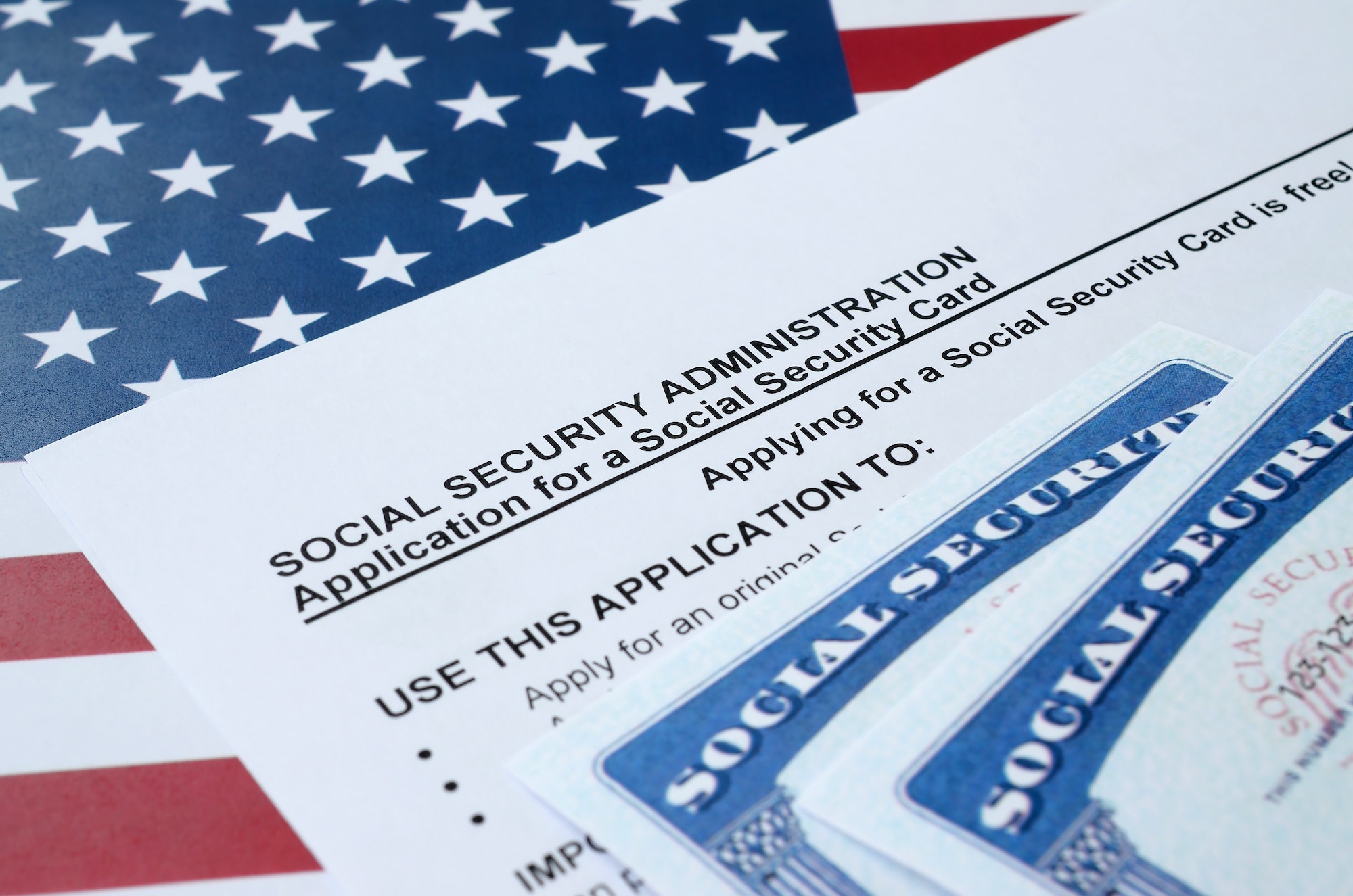Here is a topic you might not be as familiar with: Social Security Spousal Benefits Loophole. Intriguing, right? Stay with me as we dive deep into this lesser-known corner of Social Security. When you think about Social Security, what’s the first thing that comes to mind? Retirement, maybe? Most people know about the individual benefits they can expect once they hit retirement age. Let’s demystify this topic together!
Contents
- 1 What are Social Security Spousal Benefits?
- 2 Basic Eligibility Criteria: Who Can Tap into This?
- 3 The Loophole: What’s All The Fuss About?
- 4 Claiming the Spousal Benefit: The Steps
- 5 Diving Deeper: The ‘Deemed Filing’ Rule
- 6 Exceptions to the Rule
- 7 Navigating The System: Professional Help
- 8 Future of the Loophole
- 9 Final Remarks About Social Security Spousal Benefits Loophole
- 10 FAQs
- 10.1 Q: What is the basic age requirement to claim the Social Security Spousal Benefit?
- 10.2 Q: How long should I have been married to claim this benefit after a divorce?
- 10.3 Q: What is the ‘deemed filing’ rule?
- 10.4 Q: Are there any exceptions to the ‘deemed filing’ rule?
- 10.5 Q: Can I get professional help in understanding and claiming these benefits?
What are Social Security Spousal Benefits?
In the mystique of the Social Security Spousal Benefits, there may be some concerns! Let’s unpack this concept a little more, shall we?
At its core, the Social Security Spousal Benefit is designed as a safety net, ensuring that both members of a couple can receive retirement benefits, even if one of them might not have enough work credits or perhaps never worked at all. It’s like a band having a lead singer and a backup singer; even if the backup singer never goes solo, they’re still an essential part of the show!
The Percentage Game
Now, when we say your ‘plus one’ is a percentage of your spouse’s benefits, what do we mean? Typically, if you claim your spousal benefit at your full retirement age, you could receive 50% of your spouse’s full retirement benefit. Imagine your spouse’s benefit as a chocolate cake – if they get the whole cake, you’re entitled to half of it as your spousal share. But remember, the exact amount you receive can vary based on several factors like your age when you claim the benefit.
Working vs. Non-Working Spouses
Here’s the cool part. Say you’ve always been a home-maker, taking care of the kids, managing the household, or perhaps you pursued passions that didn’t come with a steady paycheck. You might be wondering, “What about my retirement?” Well, the Social Security Spousal Benefit has got you covered! Even if you’ve never earned a dollar or accumulated any work credits, you can still claim this benefit based on your spouse’s work record. It’s like getting a VIP pass to an event, courtesy of someone else!
What About Divorcees and Widows/Widowers?
Life can be unpredictable. Relationships end, and sometimes, tragically, spouses pass away. But here’s a silver lining: the Social Security system offers provisions for divorced spouses and surviving spouses too. If you were married for at least ten years and then divorced, you could still be eligible for spousal benefits based on your ex-spouse’s record. Similarly, if you’re a widow or widower, there are survivor benefits which ensure you’re taken care of.
Timing Matters
When it comes to Social Security, timing is crucial. The age at which you decide to claim your spousal benefit can impact the amount you receive. If you claim before your full retirement age, expect a reduction in the benefit. It’s like turning off the oven too soon – your cake might not rise to its full potential!
Basic Eligibility Criteria: Who Can Tap into This?
Navigating the Social Security landscape can sometimes feel like you’re deciphering a treasure map. So, let’s zoom in on the Basic Eligibility Criteria for the Social Security Spousal Benefits to better understand who can unlock this treasure.
The Age Factor: The Magic Number 62
Why 62, you might wonder? The age 62 is considered the earliest age you can start claiming Social Security retirement benefits, and similarly, it’s the earliest age for claiming spousal benefits. However, a word of caution: claiming at 62 means you’ll get a reduced amount. It’s like grabbing a slice of pie before it’s fully cooled; it might still taste good, but you’ll miss out on its full, savory potential.
Your Spouse’s Status: The Key Player
This might seem like a no-brainer, but it’s a vital piece of the puzzle. If your spouse isn’t eligible for retirement or disability benefits, then the spousal benefits are off the table. It’s a bit like trying to get into an exclusive club; if your plus-one doesn’t have an invite, you might be left standing outside. So, before you even consider the spousal benefit for yourself, ensure your spouse qualifies first.
The Divorce Conundrum: A Past Relationship’s Silver Lining
Life has its twists and turns, and relationships don’t always last forever. But when it comes to Social Security Spousal Benefits, the past can indeed come back to help. If you find yourself divorced, there’s some good news: that former union might still grant you access to spousal benefits. The catch? The marriage needs to have lasted a minimum of 10 years. Think of it as a loyalty program; stay in it for a decade, and you’re entitled to some perks. But remember, if you remarry, things can get a tad more complex, and the benefits from your previous marriage might become inaccessible.
What About Widows and Widowers?
While the basic eligibility criteria focus on those 62 and above, widows and widowers can start claiming survivor benefits, which are a bit different from spousal benefits, as early as age 60. And if they’re disabled, they can start even earlier, at age 50. It’s the system’s way of offering a safety net in challenging times.
The Loophole: What’s All The Fuss About?
When you hear the word ‘loophole’, it might sound like you’re about to embark on a secret adventure, right? In the world of Social Security, this particular loophole is that exhilarating path few know about, yet it offers a potentially lucrative journey. Let’s delve deeper and understand why this “secret” has had retirees and financial planners buzzing.
Dual Benefits: The Two-Lane Highway
Imagine you’re on a two-lane highway. On one lane, you have your own retirement benefits accumulating, and on the other, the spousal benefits. Now, the loophole essentially allows you to drive on the spousal lane, while the retirement lane remains free and clear, letting your benefits grow.
The Benefit of Waiting: Watch Your Money Grow
Every year you delay claiming your own retirement benefits after your full retirement age, up until age 70, these benefits grow thanks to the Delayed Retirement Credits. It’s a bit like having a money tree and watching it bear more fruit for every year you let it grow untouched. By the time you hit 70, you could have a significant bump in your monthly benefit.
Why Doesn’t Everyone Do This?
Great question! First, not everyone knows about it. It’s like a secret handshake; if you’re not in the know, you’ll miss out. Second, it’s not suitable for everyone. If you need immediate financial support or have health concerns that might affect your longevity, waiting might not be the best option. Financial strategies, like diets, are not one-size-fits-all.
The Catch: Navigating the Restrictions
Now, before you jump with joy, there are some caveats. This strategy was more accessible in the past, but due to changes in regulations, particularly the Bipartisan Budget Act of 2015, it has become limited. Only those who were 62 or older by January 2, 2016, can fully utilize this loophole. For them, it’s like having an old key to a treasure chest.
Strategic Planning: Making the Loophole Work for You
Using this loophole requires a bit of strategy. First, you need to ensure that the higher-earning spouse delays their benefits to let them grow, while the other claims the spousal benefits. This way, you both ensure a higher combined benefit in your later years. It’s like playing chess; with the right moves, you can checkmate your retirement financial worries.
Claiming the Spousal Benefit: The Steps
Navigating the Social Security waters can sometimes feel as daunting as putting together that 1,000-piece jigsaw puzzle. But fret not! Claiming the spousal benefit, with its potentially lucrative returns, is a lot more straightforward than you might think. Let’s break it down, step by step, ensuring you don’t miss a single piece of this financial puzzle.
Reach Your Destination: The Full Retirement Age
Just as plants have their time to bloom, so do your spousal benefits. The first milestone you need to achieve is your full retirement age (FRA). This age differs based on your birth year, typically ranging from 65 to 67. Think of it as the starting line of a race; you’ve got to be there to kick things off.
Filing the Golden Application: A Simple Step with Big Returns
Once you hit your FRA, it’s time to officially throw your hat into the ring. How? By applying for the spousal benefit. This process can be done:
- Online: Just like ordering your favorite book or those trendy shoes, hop onto the Social Security Administration’s website and follow the prompts.
- In-Person: Sometimes, face-to-face interactions provide clarity. Schedule an appointment at your local Social Security office and let their representatives guide you.
- Over the Phone: Not tech-savvy? No worries! A simple phone call to the Social Security Administration can get the ball rolling.
Remember, when applying, ensure you specify that you’re claiming the spousal benefit and not your own retirement benefit.
The Waiting Game: Watch Your Money Flourish
This is where patience becomes a virtue. Once you’ve claimed your spousal benefit, your own retirement benefit sits on the sidelines, untouched, growing stronger by the year. Each year you delay after reaching your FRA, your benefit grows by roughly 8% until you hit 70. It’s like investing in a savings account with a fantastic interest rate. By the time you decide to tap into it, you’ll have a much beefier retirement benefit waiting for you.
Know When to Make the Switch
While enjoying the spousal benefits, always keep an eye on the calendar. As you approach 70, you’ll want to switch from the spousal benefit to your own retirement benefit to ensure you get the maximum amount. It’s like switching lanes on a highway to reach your desired exit smoothly.
Diving Deeper: The ‘Deemed Filing’ Rule
Alright, let’s dive into one of the more intricate bends in the Social Security river: the ‘deemed filing’ rule. Like a hidden twist in your favorite novel, this rule can change the trajectory of your benefits strategy if not understood and navigated properly.
The Essence of ‘Deemed Filing’
At its core, the ‘deemed filing’ rule sounds like a straightforward concept: once you raise your hand for one benefit, the Social Security Administration assumes you’re raising your hand for all of them. But, as with many things in the world of finance and bureaucracy, it’s a tad more nuanced than that.
How it Works: The Domino Effect
Imagine you’re at a buffet, and by picking up one dish, all other dishes get automatically added to your plate. This is essentially what the ‘deemed filing’ rule does. If you apply for your own retirement benefits, you’re automatically considered to have applied for spousal (or vice versa) benefits if you’re eligible for them. The consequence? You might end up with a lower monthly benefit amount than if you had strategically delayed one benefit over the other.
The Exceptions: Every Rule Has its Loopholes
While ‘deemed filing’ might sound like an unavoidable trap, there are workarounds. For starters, the rule applies only if you claim benefits before your Full Retirement Age (FRA). After reaching FRA, you can specifically choose which benefit to claim, allowing the other to grow.
Furthermore, those who turned 62 before January 2, 2016, have a bit of an advantage. They can claim just their spousal benefit at FRA and let their own retirement benefit accrue Delayed Retirement Credits. It’s one of the few instances where being older offers a tactical edge!
The Implications: Strategy is Key
The ‘deemed filing’ rule adds another layer to your benefits strategy. It means that, for many, simply diving in at the first chance might not be the most advantageous. Instead, a careful analysis of when and how to claim benefits can result in a more substantial financial cushion in retirement.
Navigating the ‘Deemed Filing’ Waters
While this rule can seem like a wrench in the works, it’s more of a signpost, asking you to proceed with caution and strategy. Consulting with a financial planner or an expert in Social Security benefits can offer clarity. They can help chart a course that maximizes your benefits, taking into account the intricacies of ‘deemed filing’.
Exceptions to the Rule
In the intricate tapestry of Social Security regulations, the ‘deemed filing’ rule has been a game-changer for many. But, nestled within its folds, there’s a shimmering strand of hope for a select group. Let’s pull back the curtain on the golden ticket that a few lucky individuals hold.
The Reality of the Date: Why January 2, 2016?
First things first, why does this date matter? The Bipartisan Budget Act of 2015 brought forth a myriad of changes to Social Security regulations. The act aimed to close perceived loopholes and ensure the program’s longevity. One of its main thrusts was reinforcing the ‘deemed filing’ rule. But, to ensure fairness, those who had already celebrated their 62nd birthday by January 2, 2016, were given an exception. Essentially, they were grandfathered in under the old rules.
The Power of Choice: Claiming Benefits Strategically
If you’re among this privileged group, you possess a unique flexibility. Once you reach your Full Retirement Age (FRA), you can choose to claim only your spousal benefit, leaving your retirement benefit untouched and growing. It’s like having a savings account and a checking account, and you get to decide which one to tap into without affecting the other.
Maximizing the Benefit: The Potential Windfall
This exception can translate into a significant financial boon. Let’s paint a picture: By claiming just the spousal benefit at FRA, your personal retirement benefit continues to grow by roughly 8% annually up until age 70, thanks to Delayed Retirement Credits. By the time you hit 70 and decide to switch to your own benefit, you’re looking at a much heftier monthly sum. It’s akin to letting a bottle of fine wine age, only to uncork it when it’s reached its most flavorsome peak.
Navigating Pitfalls: Ensure You’re on the Right Track
With great power comes great responsibility. If you hold this golden ticket, it’s crucial to be aware of the nuances. For instance, if you try to claim the spousal benefit before your FRA, you’ll immediately be ensnared by the ‘deemed filing’ rule. Timing, as they say, is everything.
Beyond the Loophole: Other Considerations
While this exception offers a potential windfall, it’s essential to weigh it against other factors. Health, life expectancy, financial needs, and other personal considerations might influence your decision to delay or claim benefits.
Navigating The System: Professional Help
Venturing into the labyrinth of Social Security can feel akin to wandering through an unfamiliar city without a map. Even with the best intentions and carefully curated guides, the sheer complexity can leave you feeling lost and overwhelmed. Enter professional advisors: your trusty tour guides in the vast city of Social Security.
The Lay of the Land: Why It’s So Complex
Before diving into why you might need professional assistance, let’s first acknowledge the intricate design of Social Security. With its multitude of rules, exceptions, and potential scenarios, it’s more like a sprawling metropolis than a quaint town. Each decision can lead to a domino effect of consequences, making the stakes high.
The Role of The Advisor: Your Personal GPS
A seasoned Social Security advisor is equipped with the latest updates, strategies, and nuances. They’re your personal GPS system, guiding you with precision and expertise. Their primary role? To ensure that you optimize your benefits and avoid pitfalls.
Tailored Guidance: Personalizing Your Journey
One of the prime advantages of professional help is personalization. While generic guides can offer a roadmap, advisors fine-tune the advice to your specific situation. Got a unique family scenario or financial layout? They’ll help weave through those alleys, ensuring you get the most out of your entitlements.
Forecasting the Future: Strategic Planning
Imagine trying to predict the weather in our aforementioned unfamiliar city. Tricky, right? Similarly, planning for your future on Social Security demands forecasting. Advisors use sophisticated tools and models to predict various scenarios, helping you prepare for rain or shine.
Peace of Mind: The Underrated Treasure
Let’s face it; there’s immense comfort in knowing that a knowledgeable expert has your back. With an advisor, you gain not only strategic advantages but also peace of mind. Instead of second-guessing every turn, you can stroll confidently, knowing you’re on the right path.
Cost vs. Benefits: Is It Worth It?
Certainly, professional advice comes at a cost. However, when weighed against potential pitfalls or missed benefits, this fee often pales in comparison. The key is to view it as an investment in a more secure, optimized future.
Future of the Loophole
When it comes to government programs, especially those as extensive as Social Security, change is the only constant. The loophole, which savvy individuals have been utilizing to maximize their benefits, has been a topic of discussion and speculation.
Social Security’s Evolution: A Brief Backstory
To understand the future, it’s helpful to glance at the past. Since its inception in 1935, Social Security has undergone numerous revisions. These changes are often reflective of broader economic, demographic, and political shifts. The introduction (and potential closure) of loopholes often stems from a need to ensure the program’s longevity and fairness.
The Pressure Cooker: Why Change is Inevitable
As baby boomers retire and life expectancy rises, there’s mounting pressure on the Social Security trust fund. As this pressure intensifies, it becomes essential for the administration to tighten its belts, seeking ways to optimize funds and close any financial drains. The loophole, being one such potential drain, might naturally come under scrutiny.
Past Precedence: The Writing on the Wall?
We’ve seen it before: the Bipartisan Budget Act of 2015 introduced changes to spousal benefits, altering the landscape of strategic claiming. Given this precedent, it wouldn’t be surprising if the administration considers further amendments, potentially targeting the loophole in question.
The Proponents’ Perspective: Why It Might Stay
On the flip side, advocates of the loophole argue its merits, emphasizing its role in strategic retirement planning. They view it as a reward for those who’ve paid into the system for years, granting them flexibility in their financial strategies. This viewpoint could play a role in keeping the loophole afloat, at least for a while.
Policy Predictions: A Tug of War
As with many aspects of public policy, the future of the loophole might be influenced by a myriad of factors, from economic forecasts to political tugs-of-war. While experts might have predictions, the true fate of the loophole will be determined by a blend of legislative decisions, economic imperatives, and public sentiment.
Preparedness: The Best Strategy
Given the uncertainty, the most pragmatic approach is to be informed and prepared. Keeping abreast of Social Security changes, consulting with professionals, and having a flexible retirement plan can safeguard you from potential shifts.
Final Remarks About Social Security Spousal Benefits Loophole
The Social Security Spousal Benefits Loophole is an avenue that’s worth exploring for those aiming to maximize their retirement benefits. As we’ve seen, the system can be intricate, but with a little guidance and maybe some professional help, you can make the most out of what’s available to you. So, next time you discuss Social Security at the dinner table, impress your guests with your in-depth knowledge on this topic!
FAQs
Q: What is the basic age requirement to claim the Social Security Spousal Benefit?
You must be at least 62 years old.
Q: How long should I have been married to claim this benefit after a divorce?
Your marriage should have lasted at least 10 years.
Q: What is the ‘deemed filing’ rule?
It’s a rule that states once you apply for any Social Security benefit, you’re considered to have applied for all available benefits.
Q: Are there any exceptions to the ‘deemed filing’ rule?
Yes, if you turned 62 before January 2, 2016, you can still use the loophole without being affected by this rule.
Q: Can I get professional help in understanding and claiming these benefits?
Absolutely! Seeking advice from a Social Security expert can be very beneficial.
Remember, knowledge is power, especially when it comes to securing your future!






































